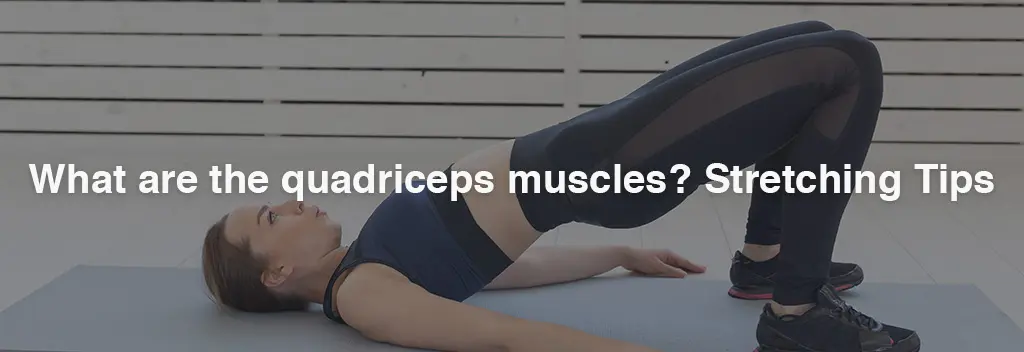The quadriceps, often referred to as the “quads,” are among the largest and most powerful muscle groups in the human body. Located at the front of the thigh, these muscles play a pivotal role in lower body strength, stability, and mobility. From walking and running to jumping and squatting, the quads are essential for many everyday movements. Understanding their anatomy and function, along with the importance of proper stretching and strengthening, is key to maintaining healthy leg function and preventing injuries.
What Are Quadriceps Muscles?
The quadriceps are made up of four muscles that reside at the front of the thigh. Together, they form a crucial part of the anterior compartment of the thigh. These muscles work together to extend the knee, which is vital for activities such as walking, running, and climbing stairs.
The four muscles that comprise the quadriceps are:
- Rectus Femoris: This is the only quadriceps muscle that crosses both the hip and knee joints. It plays an additional role in flexing the hip joint and is essential for activities like kicking and running.
- Vastus Lateralis: Located on the outer side of the thigh, this muscle is crucial for stabilizing the knee and assisting with leg extension.
- Vastus Medialis: Positioned on the inner side of the thigh, this muscle is vital for knee stabilization, especially during activities like squatting.
- Vastus Intermedius: Situated deep within the thigh, this muscle lies between the vastus lateralis and vastus medialis. It also plays a major role in knee extension.
Together, these muscles provide the strength necessary for a variety of lower body movements. The quadriceps are particularly important for extending the knee joint, and they support the body in standing, walking, running, and other dynamic activities.
Quadriceps Function and Movement
The quadriceps are primarily responsible for extending the knee. When we perform actions like standing up from a seated position or rising from a squat, the quads contract to extend the knee and propel the body upward. These muscles are also involved in activities where control is required, such as descending stairs or performing controlled squats.
In addition to knee extension, the rectus femoris muscle helps to flex the hip, enabling movements like bending at the waist or lifting the leg forward.
Common Quadriceps Injuries
While the quadriceps are designed for strength and resilience, they are also vulnerable to certain types of injuries, especially in individuals who engage in high-impact or repetitive activities. Some common quadriceps-related injuries include:
- Strains: A quadriceps strain occurs when the muscle fibers are overstretched or torn, often during high-intensity activities like sprinting or jumping. Symptoms include pain, swelling, and difficulty moving the leg.
- Patellar Tendinitis: Often called “jumper’s knee,” this condition involves inflammation of the patellar tendon due to repetitive jumping or running motions. It causes pain and tenderness around the knee, particularly when engaging in these activities.
- Quadriceps Tendinitis: This condition involves inflammation of the quadriceps tendon, usually as a result of overuse or a sudden increase in physical activity. It can cause pain and swelling in the thigh and knee area.
- Patellofemoral Pain Syndrome (PFPS): Commonly known as runner’s knee, PFPS is characterized by pain around the kneecap, often triggered by activities such as running, squatting, or climbing stairs.
Strengthening Your Quadriceps
Strengthening the quadriceps is vital for maintaining overall lower body strength, enhancing athletic performance, and reducing the risk of injuries. Here are some effective exercises to target the quads:
- Squats: A foundational exercise that engages the quadriceps, glutes, and lower back. To perform squats:
- Stand with feet shoulder-width apart.
- Lower your body by bending at the knees and hips, ensuring your back stays straight.
- Push through your heels to return to the starting position.
- Lunges: Lunges are excellent for targeting the quads, hamstrings, and glutes. To do lunges:
- Step forward with one leg, lowering your body until both knees form 90-degree angles.
- Push through the heel of your front foot to return to standing.
- Alternate legs with each repetition.
- Leg Press: This machine-based exercise isolates the quads and can help improve lower body strength. To perform a leg press:
- Sit on the leg press machine with your feet shoulder-width apart on the footplate.
- Push the weight upward by extending your legs, then slowly return to the starting position.
- Step-Ups: Step-ups mimic everyday movements like climbing stairs. To do step-ups:
- Stand in front of a sturdy platform.
- Step up onto the platform with one foot, using the heel to push your body up.
- Step back down and alternate legs.
- Wall Sits: This isometric exercise engages the quads, hamstrings, and glutes. To perform a wall sit:
- Lean against a wall and slide down until your thighs are parallel to the floor.
- Hold this position for as long as possible, focusing on engaging your quads.
Stretching for Healthy Quadriceps
Stretching is an important component of maintaining flexibility, preventing muscle tightness, and improving range of motion in the quadriceps. Regular stretching can also reduce the risk of muscle imbalances and injuries. Here are some effective quadriceps stretches:
- Standing Quadriceps Stretch:
- Stand tall with feet hip-width apart.
- Bend one knee and bring the heel toward your glutes.
- Grab your ankle with your hand, gently pulling it towards your glutes.
- Hold for 15-30 seconds, then repeat on the opposite leg.
- Kneeling Quadriceps Stretch:
- Kneel on the floor with one knee bent at a 90-degree angle and the other leg in front.
- Gently shift your weight forward, feeling a stretch in the quadriceps of the back leg.
- Hold for 15-30 seconds, then switch sides.
- Lying Quadriceps Stretch:
- Lie on your side with the bottom leg bent for support.
- Bend the top knee and reach back to grab the ankle.
- Gently pull the ankle towards your glutes, holding for 15-30 seconds.
- Chair Quadriceps Stretch:
- Sit on the edge of a chair with feet flat on the floor.
- Slide one foot back behind you, resting the top of your foot on the ground.
- Lean back slightly and press your hips forward, feeling the stretch in the quadriceps.
- Hold for 15-30 seconds and switch sides.
- Dynamic Quadriceps Stretch:
- Perform leg swings or walking lunges to dynamically stretch the quads before exercise.
- Swing one leg forward and backward in a controlled manner, gradually increasing the range of motion.
- Perform 10-15 repetitions per leg.
Conclusion
The quadriceps are essential for lower body strength, stability, and mobility, making them crucial for everyday activities. Proper understanding of their anatomy and function is key to keeping these muscles healthy and preventing injuries. Strengthening the quads through exercises like squats, lunges, and leg presses, as well as incorporating stretching into your routine, can help maintain flexibility, enhance performance, and improve overall leg function. By taking care of your quadriceps, you can enjoy a more active and injury-free lifestyle.



